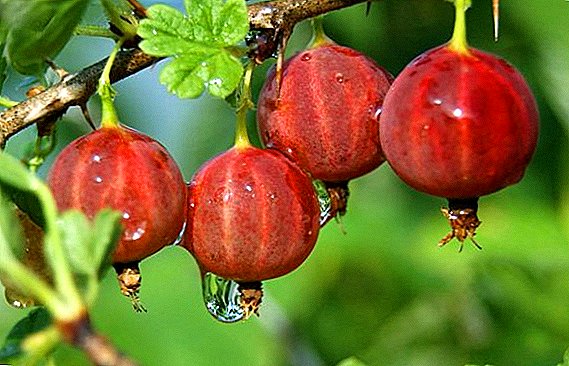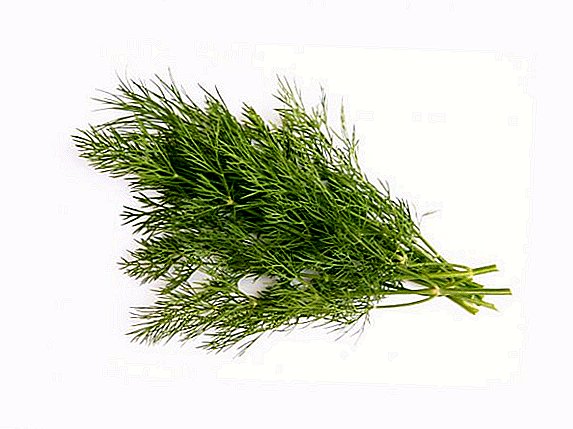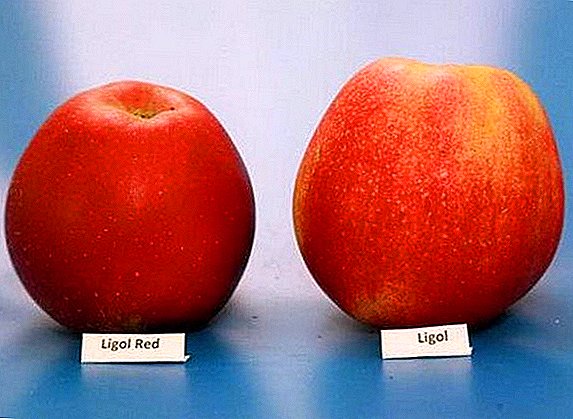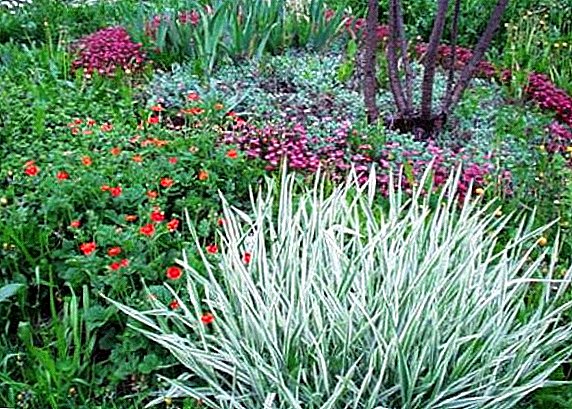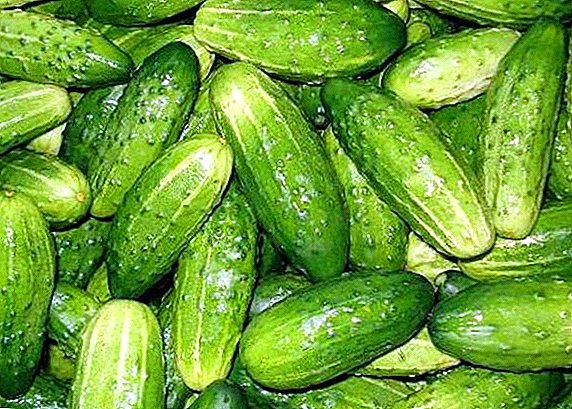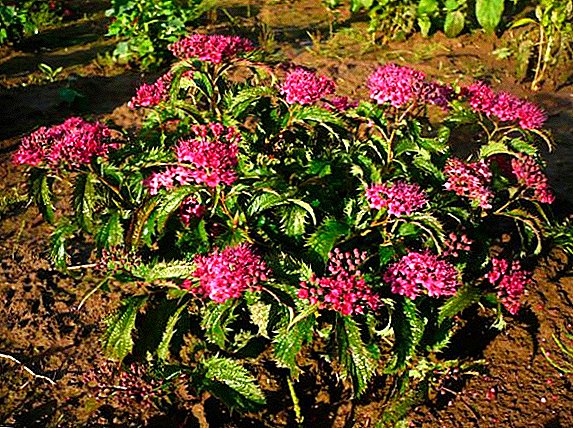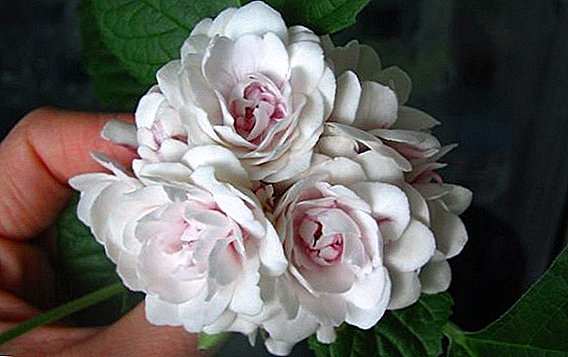 Choosing plants for the house, I want them to meet some criteria. First of all - this is beauty, because most often the flowers in the interior perform a decorative function. It is also important that the plant was unpretentious and did not require time-consuming and special knowledge in caring for it. At first glance it may seem that these are quite high requirements and finding a representative of the flora who can meet this will not be easy, but this is not at all the case. If you go into this issue in more detail, you can pick up exactly what you need. One of the stunning plants of its beauty is klerodendrum, which is unprincipled in care, and even a novice in floriculture can grow this splendor at home.
Choosing plants for the house, I want them to meet some criteria. First of all - this is beauty, because most often the flowers in the interior perform a decorative function. It is also important that the plant was unpretentious and did not require time-consuming and special knowledge in caring for it. At first glance it may seem that these are quite high requirements and finding a representative of the flora who can meet this will not be easy, but this is not at all the case. If you go into this issue in more detail, you can pick up exactly what you need. One of the stunning plants of its beauty is klerodendrum, which is unprincipled in care, and even a novice in floriculture can grow this splendor at home.
Description
Klerodendrum Filipino belongs to the genus Klerodendrum and the family Luminous. Its homeland is considered to be forests of Japan and China, since it is there that it grows in natural conditions. A small evergreen shrub grows up to 2 m in height. Upright shoots are covered with large light green leaves with long petioles. For the plant is characterized by a wide sheet plate heart-shaped, terry to the touch. Streaks on foliage depressed. On the edge of the leaves are small teeth. The main advantage of the shrub is its gorgeous flowers, which are collected in inflorescences and form small bouquets with a diameter of 18-24 cm. The buds are painted in a delicate pink color that looks a bit like a tea rose. Terry flowers are most often found among klerodendrum.
Streaks on foliage depressed. On the edge of the leaves are small teeth. The main advantage of the shrub is its gorgeous flowers, which are collected in inflorescences and form small bouquets with a diameter of 18-24 cm. The buds are painted in a delicate pink color that looks a bit like a tea rose. Terry flowers are most often found among klerodendrum.
Important! If you provide a shrub with comfortable conditions and properly care for it, it will delight with its flowering all year round and almost continuously.The flowers of this species are endowed with wonderful aroma, in connection with which, the bush got its second name - fragrant Volkameria.
Growing conditions
Growing Filipino Clerodendrum is quite simple, especially if you know the basic rules of planting and caring for him at home. As mentioned above, the shrub is unpretentious, but still there are certain nuances that certainly need to be taken into account in order for the plant to grow quickly and bloom profusely.
To the family yasnotkovyh also include such plants as: basil, mint, rosemary, savory, sage, marjoram, lemon balm, thyme and marjoram.

Temperature
In order to provide the flower with maximum comfort, in summer the air temperature in the room where it grows should be + 19 ... +25 degrees. As for the winter period, there are some nuances: if it is possible to organize the illumination with fluorescent lamps, then the temperature regime should be maintained within the same range, and if this is not possible, then it is desirable that the room is cooler, approximately + 16 ... +18 degrees. The fact is that due to the lack of light, the klerodendrum will not bloom in winter, and when the temperature is too warm, its shoots can grow rapidly, which does not have a very positive effect on the appearance and health of the shrub.
Air humidity
Daily spraying is one of the compulsory flower care procedures, since dry air is completely unsuitable for culture. It is necessary to spray the shrub with separated water at least once a day, both in summer due to heat and in winter due to the fact that heating devices dry the air in the room too much.

Lighting
A sufficient amount of light is the key to abundant and prolonged flowering. Although there should be a lot of lighting, open sunshine should be avoided. It would be ideal to place the klerodendrum on the east or west window, but if this is not possible, then landing on the southern window sill is allowed, but provided that the shading from the scorching sun is assured.
Important! It is not recommended to plant a flower on the north side, as due to a lack of light, it most likely will not bloom.
The soil
Planting substrate should be light and have moderate acidity. It is ideal to mix leaf (2 parts), turf (2 parts), humus and peat ground (1 part each) with sand (1 part). In order to avoid stagnant moisture in the pot, be sure to lay drainage on its bottom.
Care
To care for the plant is very simple, it all comes down to the usual procedures for each grower, such as watering, feeding and pruning. If you timely and correctly fulfill all these minimum requirements of a klerodendrum, he will thank you with his beauty and lush flowering.

Watering
Water procedures should be carried out regularly as the soil dries. Water the shrub abundantly, separated by water at room temperature. Provided that in winter the temperature in the room is kept within + 18 ... +25 degrees, watering is carried out in the same way. And if in winter the plant is grown in a cooler room, then water treatments should be reduced.
Important! Excessive wateringBut during a dormant period, that is, when kept in winter at cool temperatures, it can cause the roots to rot.
Top dressing
The plant is very responsive to care, so it is advisable to fertilize it once every 2 weeks with complex fertilizers intended for indoor plants.
Pruning
Early spring shoots of klerodendrum is recommended to cut by 1/3, this is necessary in order for the plant to bush better, and its flowering was abundant. Lateral processes are also pruned to give the shrub a neat look and remove the extra load, otherwise support may be needed. 
Transfer
A flower is transplanted every year. This is due to the fact that it grows fairly quickly and becomes crowded. When transplanting into a larger pot, it is necessary to take into account that the roots of the plant are very brittle, so the best way is to transplant together with an earthy ball. Having moved a flower to a new container, one should fill the void with a substrate and leave the flower in a warm, well-lit place. The most favorable time for the procedure - early spring.
Did you know? From the Latin "clerodendrum" literally translates as "the tree of destiny", numerous popular beliefs say that the plant can bring joy and happiness to the house.
Breeding
You can multiply the Klerodendrum Filipino by cuttings and seeds. In the first case, in spring, the top of the plant is cut, on which there should be at least 3 internodes. The cutting is placed in a container with water or a mixture of perlite with peat, so that it takes roots. In order for the plant to take root faster, you can cover it with a film. The temperature in the room with seedlings should not fall below +20 degrees. After the root system is formed on the handle, the young plant is carefully transplanted into the pot. Seed propagation is more troublesome, but also effective.
Peperomia, havortia, dysphagia, aspidistra, fatty and fittonia will also look beautiful in your home.
 Planting material is sown at the end of winter-early spring in containers with a light substrate and covered with film or glass to create greenhouse conditions. Seedlings need to be watered and ventilated regularly, in order to avoid stagnant moisture. Mandatory conditions is the placement of mini-greenhouse in a well-lit, warm room. After 1.5-2 months, the first shoots will appear, and after 3-4 leaves grow on them, they dive, transferring them to separate small pots. Before transplanting to a permanent place, seedlings should get stronger and take root well.
Planting material is sown at the end of winter-early spring in containers with a light substrate and covered with film or glass to create greenhouse conditions. Seedlings need to be watered and ventilated regularly, in order to avoid stagnant moisture. Mandatory conditions is the placement of mini-greenhouse in a well-lit, warm room. After 1.5-2 months, the first shoots will appear, and after 3-4 leaves grow on them, they dive, transferring them to separate small pots. Before transplanting to a permanent place, seedlings should get stronger and take root well.Did you know? Science knows more than 400 species of this plant, and only a few of them can grow at home. Some representatives are widely used in traditional and classical medicine. At the moment, Trevulose clerodendrum is being examined for effectiveness in the fight against cancer.
Diseases and pests
This plant is extremely rarely ill, and all its ailments are associated solely with non-compliance with the rules of care. For example, in the absence of sufficient light, the shrub simply does not bloom. With excessive watering and the absence of drainage, the roots may rot, and if the temperature or humidity of the air does not suit the klerodendrum, its leaves will wilt and may turn yellow and fall off. Spider mite and whitefly can cause certain inconveniences, but if you find pests in a timely manner, you can quickly eliminate them.  To do this, rinse the leaves with hot water, and after the water procedure, treat with a solution of a suitable insecticide diluted according to the instructions for the preparation. Filipino Clerodendrum is able to become the highlight of any interior - flowering shrubs with fragrant delicate aroma of flowers will not leave anyone indifferent. The unpretentious plant will be able to grow up both the beginner, and skilled flower grower.
To do this, rinse the leaves with hot water, and after the water procedure, treat with a solution of a suitable insecticide diluted according to the instructions for the preparation. Filipino Clerodendrum is able to become the highlight of any interior - flowering shrubs with fragrant delicate aroma of flowers will not leave anyone indifferent. The unpretentious plant will be able to grow up both the beginner, and skilled flower grower.



